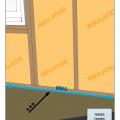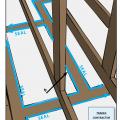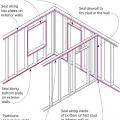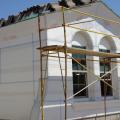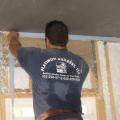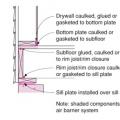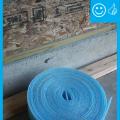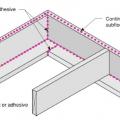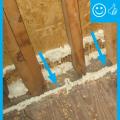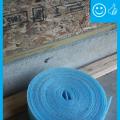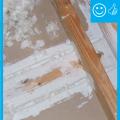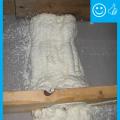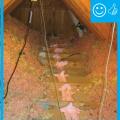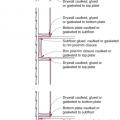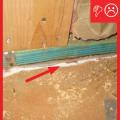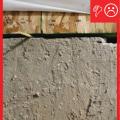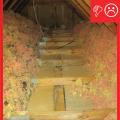Showing results 1 - 27 of 27
Air-seal above-grade sill plates adjacent to conditioned space to minimize air leakage.
Air-seal drywall to top plates at all attic/wall interfaces to minimize air leakage.
Expanded polystyrene insulation is installed with joints taped and lath attached in preparation for the application of stucco
Install a foam gasket along top plates before installing drywall
Right - A termite shield and a sill gasket are installed between the sill plate and the foundation on a raised slab foundation.
Right – Spray foam was installed at the sheathing intersection as well as the sill plate to sub-floor connection.
Right – The sill plate was sprayed with foam prior to installation atop foundation.
Right: All joints in the rigid foam are taped to keep stucco out of joints for even drying. Mesh tape (shown here) is used with expanded polystyrene (EPS); acrylic sheathing tape or self-adhered membrane is used with XPS
Siding has been removed so cellulose insulation can be dense-packed into the exterior walls of this home
Spray foam provides a critical seal between the subfloor, rim joist, and sill plate
Stucco is installed over rigid insulation, which is installed over a drainage plane consisting of a drainage gap and building wrap layer over the sheathing
Wrong - The caulk is too far from the sill plate to effectively air-seal the gap.
Wrong – Foam was sprayed at exterior sheathing and sill plate connection, leaving gaps beneath sill plate.
Wrong – There is no foam gasket or air-sealing between the sill plate and masonry foundation.
